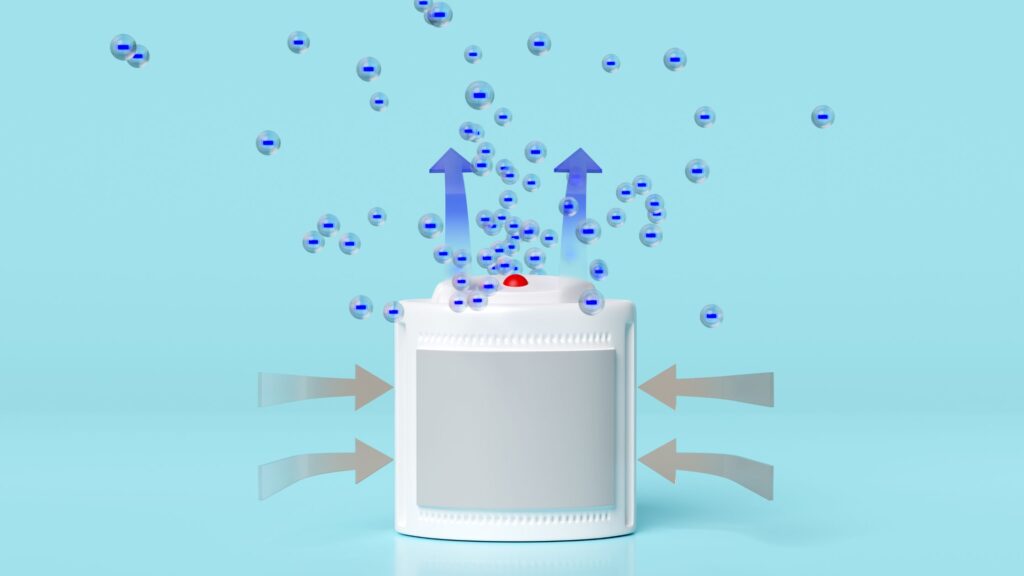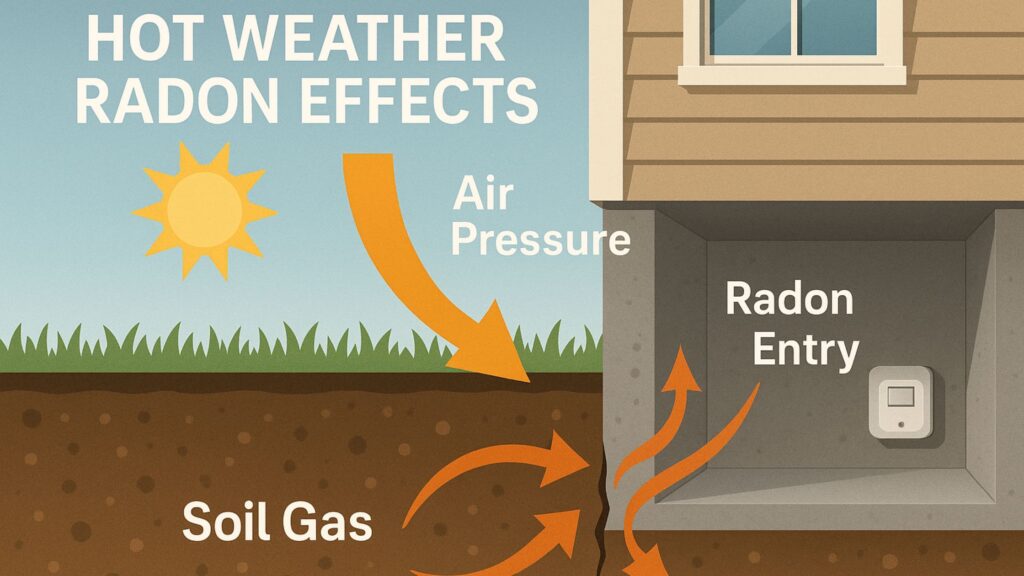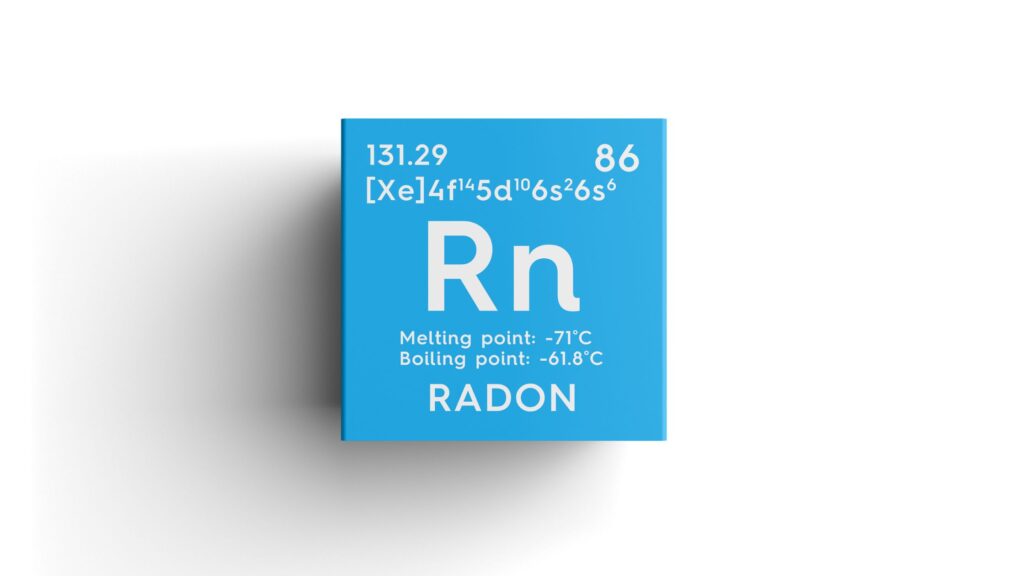
Discovery of Radon
In 1900, Friedrich Ernst Dorn, a German chemist, first identified radon while observing how radium naturally decayed. By 1923, scientists began calling it Niton, from the Latin word nitens, meaning shining or brilliant. Today, it is recognized as radon (Rn)—a radioactive noble gas that is colorless, odorless, and invisible to the human senses.
Radon forms naturally during the breakdown of uranium in rocks, soil, and groundwater. While highly radioactive, it has also been investigated for potential medical applications, such as targeting certain cancers through radiation therapy.
Position of Radon in the Periodic Table
- Symbol: Rn
- Atomic Number: 86
- Group: 18 (Noble Gases)
- Period: 6
Radon is the heaviest noble gas in the periodic table. At extremely low temperatures, it produces a glowing phosphorescence that shifts from yellow to orange-red as the temperature drops toward liquid-air levels.
With a density 7.5 times greater than air and over 100 times heavier than hydrogen, radon is found almost everywhere in trace amounts. It primarily originates from the decay of radium-226, which is present in igneous and metamorphic rocks like granite, gneiss, schist, phosphate rocks, and uranium ores.
Electron Configuration of Radon
Radon’s position at atomic number 86 places it in the sixth period of the periodic table. Its electron configuration completes a full outer shell with eight valence electrons, making it chemically stable—similar to other noble gases.

Physical Properties of Radon
- State: Gas (under standard conditions)
- Color/Odor/Taste: None (invisible and odorless)
- Density: 9.73 g/L (heaviest noble gas)
- Melting Point: −71°C
- Boiling Point: −61.8°C
- Solubility: More soluble than lighter noble gases, but only slightly soluble in water
- Luminescence: Produces golden phosphorescence at cryogenic temperatures
- Reactivity: Chemically inert under most conditions
Chemical Characteristics
- Radon is a zero-valence element, largely unreactive like other noble gases.
- All radon isotopes are radioactive, with radon-222 being the most stable, having a half-life of 3.8 days.
- It exhibits low electronegativity and does not engage in most typical chemical reactions.
- With fluorine, radon can form a compound called radon fluoride (RnF), although it is unstable and decomposes quickly when vaporized.
- Radon gas does not easily mix with air, instead dispersing unevenly.
Radon’s implications on health
- Radon gas primarily affects humans through inhalation. Outdoors, concentrations are usually low, but indoors—especially in poorly ventilated spaces like basements—levels can rise significantly.
- Exposure Sources:
- Cracks in building foundations and walls
- Groundwater from deep wells
- Natural seepage from uranium-rich soils and rocks
- Health Risks:
Radon’s influence on the environment
- Radon is rare in nature compared to many other gases, but both natural and human activities contribute to its release:
- Natural Sources: Uranium-rich soils, phosphate rocks, igneous formations
- Human Activities: Coal combustion, phosphate and uranium mining
- Once in the environment:
- Radon rises from soil into the air, often attaching to dust particles.
- It can seep into groundwater, later escaping when exposed to the atmosphere.
- Because of its short half-life (~4 days), radon decays rapidly, transforming into other isotopes that are less harmful.

The Role of Radon (periodic table radon) in Scientific Research
Despite its health risks, radon has played an important role in research and applied science:
1.Medical Applications: Historically, radon was applied in cancer treatments by implanting radon-filled tubes into tumors (though this practice is rare today due to safer methods).
2.Earthquake Prediction: Variations in radon levels in groundwater can indicate seismic activity.
3.Nuclear Physics: Used to study radioactive decay and particle interactions.
4.Historical Use in Radiography: In the 20th century, radon was used in radiation sources before safer alternatives were developed.
Conclusion
Radon, element 86 on the periodic table, is a heavy noble gas with unique physical properties and significant health implications. While it occurs naturally in rocks, soils, and groundwater, excessive indoor accumulation poses serious health risks, especially lung cancer. At the same time, radon has been used in scientific research, geological studies, and limited medical treatments.Visit dsm radon for better understanding.
FAQs
1. Where does radon appear in the periodic table?
Radon is found in Group 18 (Noble Gases), Period 6, with the symbol Rn and atomic number 86.
2. What are the main health risks of radon?
Long-term radon inhalation increases the likelihood of lung cancer, even in non-smokers.
3. Can radon be useful in science?
Yes. It has applications in earthquake prediction, nuclear studies, and medical research.
4. How can I reduce radon levels at home?
By installing a radon mitigation system that vents the gas outside and improves indoor air circulation.




